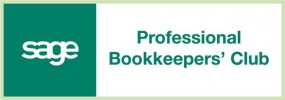In the current difficult economic environment, the failure of one business can have a knock-on effect on its suppliers. If one of your customers goes down you need to quantify the bad debts created by that failure as soon as possible.
Say your accounting year end is 30 June 2012, and one of your customers fails in October 2012 leaving the sales invoices it received in April, May and June all unpaid. Where it is clear that you will not receive payment from the liquidators or administrative receivers of that business for those sales invoices, you can include the bad debt built up between April and June 2012 in your accounts to 30 June 2012. This applies as long as your June 2012 accounts have not been finalised by the time you receive confirmation of the bad debt. Any sales made to this customer between July and October 2012 will need to be written off in your accounts to 30 June 2013.
This is a clear example of business failure, but bad debts can also arise where your customer is still trading. Before your accounts are finalised you need to undertake a thorough check of all your sales debts. Where you can identify specific debts that are unlikely to be paid, and you have made every effort to recover the money due, those amounts need to be written off in your accounts. This will reduce your taxable profits, and avoid you paying tax on money you are very unlikely to receive.
VAT on bad debts can only be reclaimed six months after the due date for payment for the invoice. You must also have paid the VAT due to the VAT-man before it can be reclaimed. If you use the cash accounting scheme for VAT you automatically get relief for unpaid sales debts, as you do not account for the VAT due until the sales invoice is paid.


